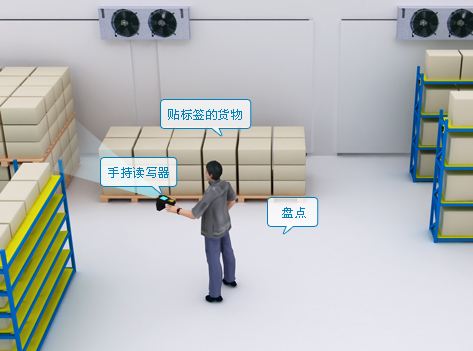RFID technology improves the efficiency of warehousing logistics supply chain management
Publication time:2021-10-12 16:26 Article source:handler
Warehousing logistics has been widely used in every field, and the transparency and inventory turnover rate of warehousing logistics supply chain management have become the focus of management and control. The application of RFID technology will vigorously promote the field of commodity circulation, especially in warehousing, distribution, retail management and other links to play such a role. Effectively reduce the loss of out of stock and improve the efficiency of warehousing and logistics. RFID technology improves warehousing logistics supply chain management.
RFID technology is used for intelligent warehouse logistics management. First, electronic tags are affixed to each goods, and the information of the readers in each channel of the channel warehouse is used to determine the entry, exit, allocation, shift of the warehouse, inventory inventory, etc. Process, automatic data collection through RFID reader data, to ensure the speed and accuracy of data input in all aspects of warehouse management, to ensure that enterprises can grasp the real data of inventory in a timely and accurate manner, and achieve efficient cargo search and real-time inventory counting. It is helpful to improve the efficiency of warehouse management, get rid of the time-consuming and laborious traditional warehouse management, reasonably maintain and control enterprise inventory, and enable the enterprise to operate efficiently.

The staff can directly complete the warehousing/outgoing/inventory management, basic/system information management and data statistical analysis and other links at the job site by operating the handheld terminal, reducing the efficiency and error rate of manual operations; using wireless networks to carry out Data interaction, through the control and management of data authority, data processing has a complete error correction mechanism, can detect and process difference data in time, and has a flexible data processing mechanism.
Handheld terminal application:
Warehouse management
After receiving the warehousing order, put the product into the warehouse according to certain rules. When the RFID electronic tag (ultra high frequency) enters the electromagnetic wave range of the RFID fixed reader, it will be actively activated, and then the RFID electronic label and RFID fixed reading The writer communicates, and the relevant data can be collected into the system. You can also directly use the handheld terminal to collect data on the goods at close range. Then compare the relevant data with the order to check whether the quantity and model of the goods are correct. If there are errors or omissions, perform manual processing, and finally transport the goods to the designated location and place them in accordance with the rules.
Outbound management
Use the RFID handheld terminal to collect the information of the RFID electronic tag, check whether it corresponds to the plan, according to the picking plan, the outbound goods are sorted and processed. When there is an error, an alarm will be issued, and the staff can handle it on the spot, and finally The data is sent to the management center to update the database to complete the delivery.
Inventory management
In accordance with the requirements of warehouse management, conduct regular and irregular inventory. Traditional inventory is time-consuming, labor-intensive, and error-prone. And all these RFID solves these problems. When there is an inventory plan, the RFID handheld terminal is used to carry out inventory scanning of goods, and the information of the inventory can be transmitted to the back-end database through the wireless network, and the information in the database can be carried out. Comparing, the generated difference information is displayed on the RFID handheld terminal in real time, and it is provided to the inventory staff for verification. After the inventory is completed, the inventory information is checked with the database information in the background, and the inventory is completed.
Software and system applications
Different personnel are given different permissions, and warehouse managers at all levels can query and perform related business operations for inventory information in different dimensions. And directly use the handheld terminal to perform simple data analysis and provide accurate inventory information to the superior in real time, which can improve the accuracy of goods inquiry, reduce inventory levels, and improve the efficiency of the logistics system to strengthen the competitiveness of enterprises.
Logistics warehousing management is generally divided into four links: storage, storage, inventory, and transportation. RFID electronic tags are used as the carrier of logistics management and control. After the RFID electronic tags and item information are bound, automatic identity information collection is carried out. In the management and control of each link, RFID will play a powerful role to make the logistics link more efficient, accurate, and safe, and realize automated, informatized, and intelligent logistics operations.
- Last: Beijing will launch a special physical examination for the city, and coordinate the management of hazardous chemicals with technologies such as electronic tags
- Next: Chengdu Tianfu International Airport will introduce Internet of Things technologies such as face recognition check-in and RFID luggage tracking


 scan
scan  Twitter
Twitter Facebook
Facebook LinkedIn
LinkedIn Alibaba
Alibaba
